 Abraham Lincoln
If given the truth, the people can be depended upon to meet any national crisis...
Abraham Lincoln
If given the truth, the people can be depended upon to meet any national crisis...
 Guildford news...
for Guildford people, brought to you by Guildford reporters - Guildford's own news service
Guildford news...
for Guildford people, brought to you by Guildford reporters - Guildford's own news service
Updated: Remembering Guildford Footballers Who Were Killed In The Great War
Published on: 23 Dec, 2014
Updated on: 27 Dec, 2014
By David Rose
Much is being made this year about the 1914 Christmas truce between armies on the Western Front during the First World War, and the impromptu football match that was played between British and German soldiers.
It goes without saying that scores of young men who fought in the Great War were keen sportsmen. Of the nearly 500 men from Guildford who lost their lives in that war there were several who had played football for the town’s then main team.

Guildford Football Club, the ‘Pinks’, pictured at the end of the 1911-12 season. Thomas Wooldridge, who was killed in the First World War, is believed to be second from right in the row of men seated on a bench. Picture: Peter Phillips collection.
They played for Guildford Football Club, which was formed in 1877 and was nicknamed the ‘Pinks’ due to the colour of their shirts being claret with pink sleeves. However, in the photos here the teams are pictured in striped shirts. Matches were played at the Sports Ground in Woodbridge Road. In fact, the ‘Pinks’ predated Guildford United, a semi-professional club that was formed in 1921 and which changed its name to Guildford City at the end of the 1926-27 season to coincide with the formation of the Diocese of Guildford. The ‘Pinks’ continued as an amateur team until 1953.
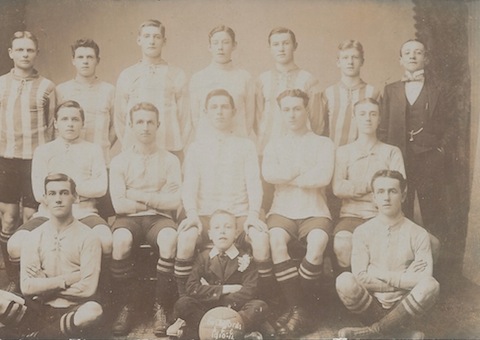
This is believed to be Guildford Football Club, and pictured in 1910 (according to the writing on the ball). Names are unknown, but they may feature some of those who went to war and did not return. Picture: David Rose collection.
My thanks go to local football historians Peter Phillips and his son Stuart who have, for many years, been researching the history of the ‘Pinks’ (as well as Guildford City). They have found nine ‘Pinks’ players who made the supreme sacrifice during the Great War.
Taking those names with some additional details Peter has supplied, I have cross referenced them with the Guildford Institute’s Great War Scrapbook, that contains many press cuttings from the time, and in some cases further details have been found. Here are the findings of those nine brave men who gallantly went off to war, but sadly did not return.
Second Lieutenant R. D. Apps, Royal Berkshire Regiment. He was the son of Mr Mrs Ben C. Apps, of The Court, Guildford. He went missing in France in May 1915, and was presumed killed.
Private Morgan McClellan Avery. When this story was first published on December 23, 2014, little was known about him as he is not listed in Guildford’s roll of honour as published in the book Guildford in the Great War, by William Oakley (1934). However, very soon details were being emailed to The Guildford Dragon NEWS.
John Lomas emailed some useful details that included: In the 1891 census Morgan Avery is the son of another Morgan and Ann, he also has a brother George. When looking at the 1911 census as well as Morgan being shown at 90 Woodbridge Road with Ann his mother, there is also an entry for 97 Woodbridge Road.
Pte Avery’s great grand-daughter emailed to say that he lived in Shalford and is named on Guildford’s war memorial. A quick check in Margaret Dierden’s fantastic book Gardeners and Gunpowder Shalford in the Great War, provided some excellent details: Margaret writes: “Morgan McClellan Avery Pte G?22556 6th Bn. Queen’s (Royal West Surrey) Regiment, killed in action, France and Flanders 9 April 1917 aged 33. Remembered on the Arras Memorial Bay 2. Address: Cley, Tillingbourne Road. He was born in Guildford in 1884 and worked as an upholsterer in his family’s firm, Messers Avery & Sons, Woodbridge Road, Guildford. He married Nellie May Gardiner of Station Road, Shalford in 1911; his son Denis was born in 1914 and daughter Sybil in January 1917. With his brothers he played football for Guildford, usually at outside right. He was a former Volunteer and a corporal in the 2nd Battalion The Queen’s (which became 5th Battalion The Queen’s in 1908) and rejoined the 3/5th Territorial Battalion under Lord Derby’s Scheme. Later he transferred to a service battalion and went to the front on New Year’s Day 1917. He was killed on Easter Monday 1917 in the attack on Glasgow Trench (first day of the Battle of Arras) (war diary). A friend wrote to his wife after his death: ‘He was killed by my side. I was terribly upset over it as we were such great chums, always together. We went over the top together and kept together. We got to our objective safely and were digging ourselves in when my dear chum met his death. he did not lie long in pain. He was buried by one of our sergeants. Your husband was thought a lot of by our platoon and liked by everybody.’ (Surrey Advertiser 28 April 1917). This grave must have been obliterated by later fighting as Morgan is remembered on the Arras Memorial. After his death Nellie moved to Eastbourne with her family but later returned to Guildford. There is a wedding photography from 1911. Morgan is also commemorated on the Guildford War Memorial.”
Sergeant E. Brotherton, East London Regiment. He was the son of Mr F. W. Brotherton, formerly of the Castle Grounds cafe. He went missing in France in August 1917, and was presumed killed. Sgt Brotherton’s brother, Lance Corporal C. Brotherton, of the 2/4th Queen’s (Royal West Surrey) Regiment, died of wounds in France in 1918.
Corporal E. A. Guyatt, Seaforth Highlanders. He was the son of Mrs and Mrs Guyatt, of 49 Ludlow Road, and died of gas poisoning in France in August 1918. A local newspaper report of his death noted that he “died at Rouen on August 4, from wounds and gas poisoning; enlisting at the outbreak of the war, he went to France about three years ago, where he contracted septic poisoning in his foot, anf for two years was musketry instructor at Ripon, where he won a medal for football; returned to France last Easter; was formerly employed by Messers. Williamson’s , Guildford”.
The report continued: “In a letter to his parents, the sister at the hospital says: “He died at 5.30am. He was unconscious for some time before he died, so was unable to leave any message for you. We did all we could for him, and he was visited by the Padre. He was buried on the 5th.'”
Captain R. O. G. Jeffries, Tank Corps. He was of Waverley, York Road. He died in France on September 29, 1918. His parents ran the post office in York Road. A local newspaper report of his death mentioned a fellow officer who lived at Farncombe He was Second Lieutenant J. B L. Smith, who wrote to Mr and Mrs Jeffries saying that he was bringing home Capt Jeffries’ ring.
The report continued: “On Sunday morning the 8th Tank Battalion advanced to attack the Hinderberg Line. It is customary when tanks go into action for the officers to walk in front until the objective is reached. according to Second Lieutenant Smith, the Germans starting shelling the advancing tanks and one of the shells burst right at the feet of Capt Jeffries as he was leading his section. The gallant officer was blown into the air, and died instantaneously from concussion. After the battle was over the body of Capt Jeffries was recovered and was buried at the spot where he fell.
“A native of Guildford, Capt Jeffries was educated at the Royal Grammar School, and afterwards served his time at Messers. Billing and Sons, during the later years being in the office of his uncle, Mr R. T. Billing. He enlisted in the 19th London Regiment in September 1914, and went to France the following March. At the Battle of Loos on September 15, 1915, he was severely wounded in the arm and hand. In August 1917 he went to France having be gazetted second lieutenant in the Tank Corps. In July he was awarded the Military Cross for gallantry at the capture of Hamel, and was promoted lieutenant. In August he was given his captaincy. Last month he was home on leave, and returned to the Western Front on September 12.
“‘Dick’ Jeffries, as he was familiarly called, was very popular in Guildford, and many will regard his death as a personal loss. As a footballer he rendered valuable service first for Guildford and afterwards for Godalming. Possessing a fine turn of speed, he was one of the best ‘wingers’ in the district. He was a popular member of the games room at the Guildford Institute, and generally was regarded as a jolly good fellow.”
An earlier local newspaper report described how Jeffries, aged 26, won his Military Cross: “A section of the infantry was held up by machine gun fire from some place which could not be located. There was a little rise and a tank went out to investigate. At first it could see nothing, so it perambulated round to see what it could find. It had just about made a complete circuit when suddenly out of a camouflaged trench, over 40 Germans sprang with their hands in the air, and started running with a speed away from the tank to surrender to the infantry. The same tank then saw another machine gun at work from a position near by. Turning on them it killed the crew and ground the gun to bits.
Private C. H. Loader, Royal Fusiliers. He was the son of Mrs Loader, 7 Castle Street. He died in France in 1917.
Private J. Neale, 1/5th Queen’s (Royal West Surrey) Regiment. Aged 27, he was the son of Joseph and Rachel Neale, of Hungerford, Berkshire. He was attached to the 2nd Norfolk Regiment. He was employed at Guildford Gas Works and died on April 29, 1916, being the last man to die in Kut before its surrender to the Turks.
Sapper W. E. Teague, Royal Engineers. He was the son of Mrs Teague, of Stoke Road. He died of wounds in France on October 14, 1917.
A local newspaper report on Sapper Teague’s death included the headline ‘Popular cricketer’s death’. It stated: “News was received in Guildford yesterday that Pte Walter Edward Teague died of wounds in a casualty clearing station in France on October 14. The sister of the hospital, in her letter, states that he was badly wounded in the thigh and abdomen, and that everything possible was done for him. Walter Teague was very popular in Guildford, and many will regard his death as a personal loss. He was a splendid cricketer, and rendered much valued service to the old Guildford Working Men’s Club and the Guildford Club. Much sympathy will be felt with his widowd mother and sister, who reside at 18 Stoke Road, and whose sole support he was. Both are in delacate health. Private Teague, who was, 42 years of age last July, received his education at Archbishop Abbot’s school, and for some time had been the Guildford manager for Messers. Stanfield Bros, mineral water manufacturers. He joined up on April 18, and as the official messge describes him as of the Liverpool Regiment, it is presumed he was operating with that regiment when he was fatally wounded.”
Private T. J. Wooldridge, Hampshire Regiment. He was the son of Thomas Wooldridge, of 66 Addison Road, and the husband of Matilda Annie Wooldridge, of 67, Guildford Park Road. He died in France on April 8, 1918, from wounds he received on March 26. He was the vice-captain of the ‘Pinks’.
Ian Nicholls, who has researched the men named on the Charlotteville War Memorial, states on his website: “On 22nd March 1918, the German armies broke through south of the Somme, and by 26th March the British Fifth Army, including 41st Division were, close to total disintegration. As they withdrew westward, the British rapidly established new positions and then abandoned them, as they were pushed back some 40 miles.
“It is very likely, that Thomas Wooldridge was wounded during this time and taken to one of the Military Hospitals at Rouen, in Normandy.
“Thomas is buried in St Sever Cemetery, situated about 3 kilometres south of Rouen Cathedral.”
Responses to Updated: Remembering Guildford Footballers Who Were Killed In The Great War
Leave a Comment Cancel replyPlease see our comments policy. All comments are moderated and may take time to appear. Full names, or at least initial and surname, must be given.
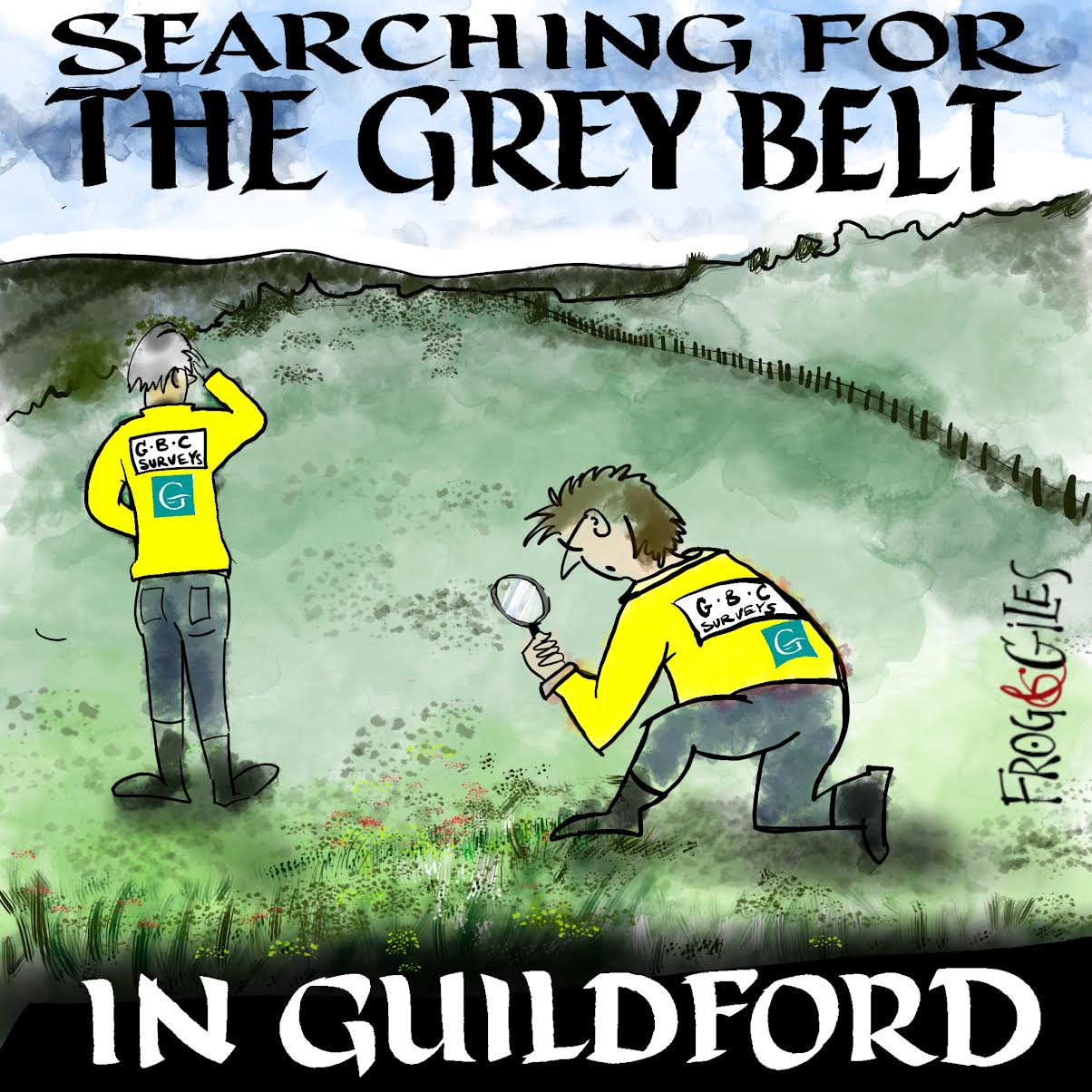
"Found any?" - "Nope, it all looks green to me!" (See Opinion: The Future is Congested, the Future is Grey)


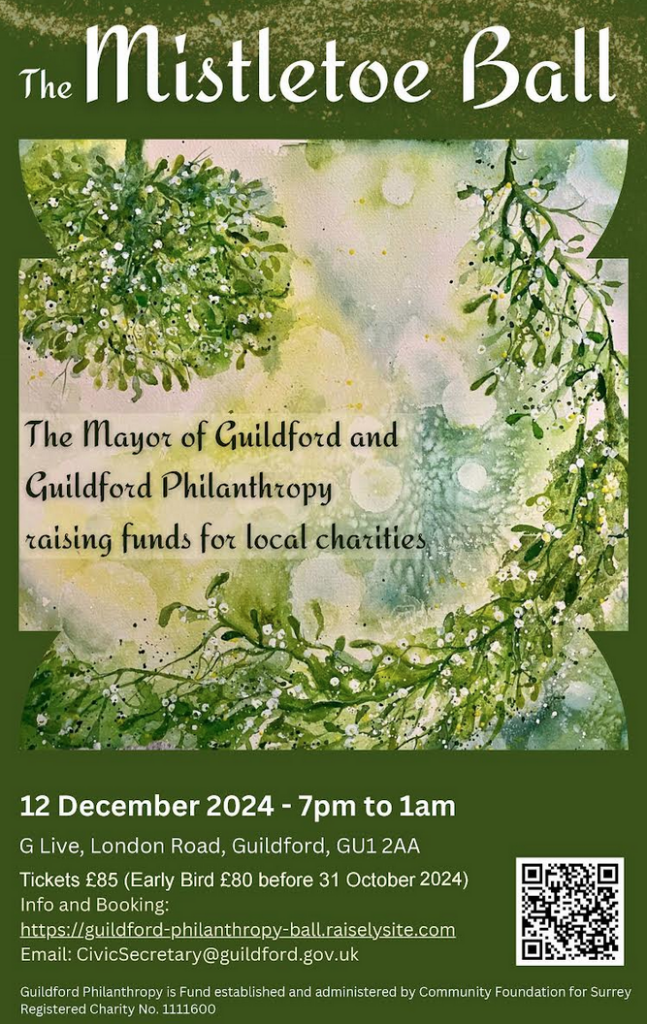

Recent Articles
- Letter: The Active Travel Proposal Is the Safest Option for London Road
- Sara Sharif Trial Latest – In an Exercise Book, Sara Expressed Her Love for Accused Mother
- Updated: Select Committee Votes to Refer London Road Decision Back to SCC Cabinet
- Letter: SCC Chose Not To Verify Our Survey
- Letter: Insensitive Management of Diseased Ash Trees Has Had Devastating Impact
- Dragon Review: Rebus – A Game Called Malice – Yvonne Arnaud Theatre
- MP Supports Call In Request of ‘Nationally Significant’, Solar Farm Planning Decision
- Children’s DNA Changed by War, Says University of Surrey Research
- Letter: Thank You for Your Reporting of This Terrible Case
- Do You Have the Will To Help Keep the Basingstoke Canal Alive?


Recent Comments
- Mike Smith on Photo Feature: Freiburg, Guildford’s Twin – Friends for 45 Years
- Derek Payne on SCC Cabinet’s Decision to Scrap London Road Scheme ‘Called-in’ by Select Committee
- John Perkins on Letter: LRAG Has Morphed from a Cross-community Group into a Pressure Group
- Maria Duarte on Sara Sharif Trial Latest – In an Exercise Book, Sara Expressed Her Love for Accused Mother
- Bethan Moore on Letter: We Need to Stop Shouting and Start Listening
- Angela Richardson on Letter: LRAG Has Morphed from a Cross-community Group into a Pressure Group
Search in Site
Media Gallery
Dragon Interview: Local Artist Leaves Her Mark At One of England’s Most Historic Buildings
January 21, 2023 / No Comment / Read MoreDragon Interview: Lib Dem Planning Chair: ‘Current Policy Doesn’t Work for Local People’
January 19, 2023 / No Comment / Read MoreA3 Tunnel in Guildford ‘Necessary’ for New Homes, Says Guildford’s MP
January 10, 2023 / No Comment / Read More‘Madness’ for London Road Scheme to Go Ahead Against ‘Huge Opposition’, Says SCC Leader
January 6, 2023 / No Comment / Read MoreCouncillor’s Son Starts Campaign for More Consultation on North Street Plan
December 30, 2022 / No Comment / Read MoreCounty Council Climbs Down Over London Road Works – Further ‘Engagement’ Period Announced
December 14, 2022 / No Comment / Read MoreDragon Interview: GBC Reaction to the Government’s Expected Decision to Relax Housing Targets
December 7, 2022 / No Comment / Read MoreHow Can Our Town Centre Businesses Recover? Watch the Shop Front Debate
May 18, 2020 / No Comment / Read More



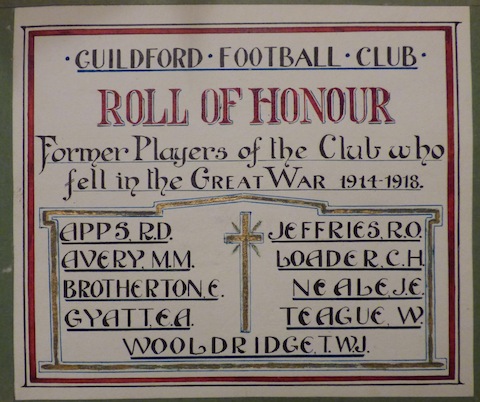

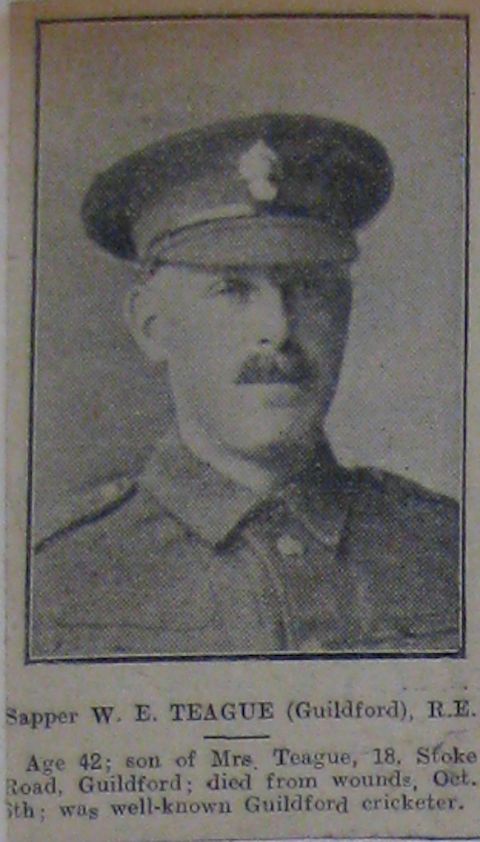
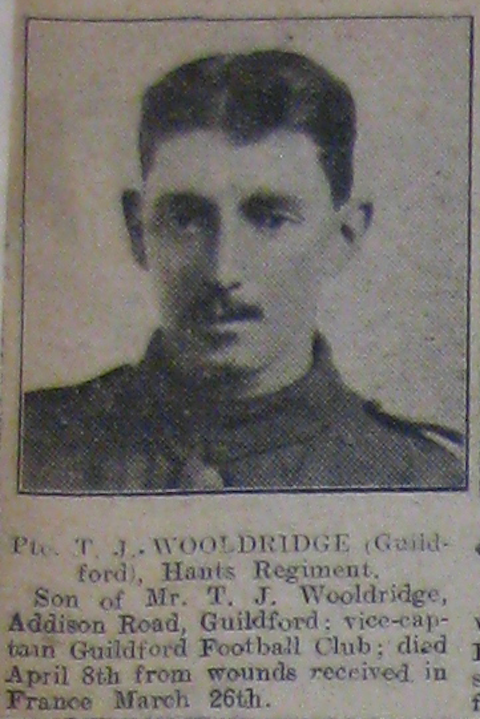



Patricia McDermott
October 14, 2016 at 2:50 am
My father, Alexander Norman McEwan, was in the 9th Battalion, Seaforth Highlanders WW1 (1915-1918) and won football medals in Ripon, England. Where would I find any details, photographs about this?
Jackie Montague
November 2, 2016 at 8:33 am
Would anybody happen to have any information on Morgan Avery’s family who had a removal business in Guildford. The name of the firm was M Avery and Sons Removal which was based in Woodbridge Road?
Kathryn Jane Kus
April 13, 2021 at 12:56 pm
I came across this article while researching my family tree.
Morgan Mclellan Avery was my great grandmother’s uncle. I believe the family firm did also arrange removals as well as making furniture. Would be great to have some more information about him and the family.